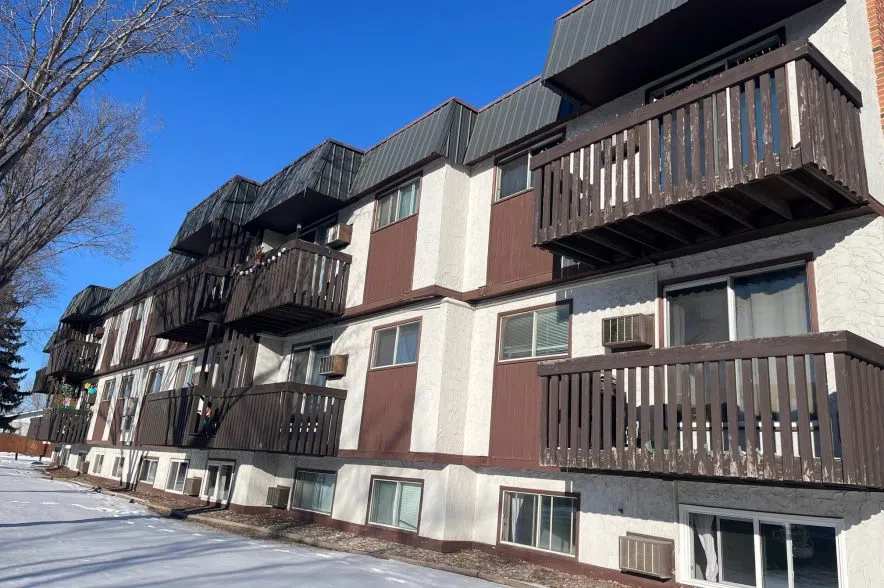Tammy Remando has until August to find a new place for her and her two cats to live — preferably for $800 a month or less.
Remando, 54, can’t afford much else. She can’t work because of various health problems and relies on Social Services payments through the Saskatchewan Assured Income for Disability (SAID) program to cover her expenses.
She’s lived in her current apartment on Confederation Drive since July 2017. She was paying $840 each month in rent at that time, but saw her monthly rate increase to $900 in January. It is set to go up once again in August to $1,125 a month.
Remando has asked about the possibility of getting more money to cover the increase in her rent costs. She presently receives less than $500 and said she was told by a Social Services worker helping her with her case that the amount she receives is not going to change.
With her previous rent cost, Remando was left with no more than $200 to cover the rest of her bills and food each month. Now, Remando knows she soon won’t be able to afford her apartment anymore. She’s currently packing and looking for other apartment options to move into before August — with little success so far.
READ MORE:
- Saskatoon, Regina rank lowest on national rent report
- Rental demand from international students will slow this year, but won’t fall: RBC
- Rental scams with fake listings raise concerns in Saskatchewan
In an emailed statement, the Ministry of Social Services said the SAID program is in place to support persons with “significant and enduring disability to provide for their basic needs” and provides additional benefits for “exceptional needs and disability-related needs.”
The statement said living income benefits increased by $30 each month last year, while the SAID program also covers utility costs of power, energy, water and sewer.
The SAID benefits each individual is eligible for is determined on a case-by-case basis, depending on their needs, according to the ministry.
On top of her financial constraints, Remando also has two cats — Gazoo and Gidget — that she considers her emotional support animals. She said she rescued both of them from the streets and can’t imagine giving them up.
With the fees many apartments charge to have pets — and some not allowing animals at all — Remando feels hopeless about being able to find a new home.
“I don’t want to leave my cats, They’re all I have,” she said.
Currently, Remando pays $10 per cat each month and worries she won’t be able to find anywhere else with fees as reasonable for her to keep her pets.
“I can’t help but feel the way I feel because there’s lots of people that are going to be homeless,” Remando said of the current apartment pricing and availability limitations facing renters, especially those on low-income budgets like herself.
Remando said she has felt sad and has been sick in recent weeks over what she is going to do.
“And a lot of it is because of stress because I don’t know where I’m going because the rent is so high everywhere,” she said. “I get very depressed sometimes … I’ve been crying a lot.”
Even small, routine costs like tenant insurance are outside Remando’s budget — posing another obstacle to finding a suitable new home.
Cameron Choquette, the CEO of the Saskatchewan Landlords Association, acknowledged the few options available to renters in Saskatchewan presently — especially those on a low-income budget.
“In short, there’s very little rental availability in Saskatchewan’s major cities,” Choquette said.
In the annual rental market report from the Canada Mortgage and Housing Corporation, rental market vacancy is show at about two per cent in Saskatoon and 1.4 per cent in Regina, with even tighter vacancy — around less than one per cent — in other, smaller Saskatchewan cities.
That’s down from 3.4 and 3.2 per cent in Saskatoon and Regina, respectively, last year.
The last time there was “virtually no availability” like this in the province, according to Choquette, was in 2013 — making these numbers the lowest seen in Saskatchewan in a decade.
As a result, tenants and potential renters are struggling to find places to live in Saskatchewan.
“When we’re welcoming up to 30,000 new people into Saskatchewan every year, they all need a place to live,” Choquette said. “(It’s) tough to welcome people to Saskatchewan when we don’t have anywhere for them to live.”
Referencing information from Statistics Canada, Choquette said there is a danger of losing people to neighbouring provinces like Alberta, Manitoba and B.C., as Saskatchewan already does each year.
Further, when supply is limited with high demand and the market is tight, Choquette said the conditions are ripe to see rental costs rise more than average.
Presently, since COVID-19, rents are being raised up to 10 per cent, year over year. Between 2015 and 2021, rents were priced at or below inflation.
“Those low-income folks feel the pinch more than middle-class Saskatchewan people,” Choquette said, acknowledging people with those tight budgets are struggling to find rentals within their spending power.
Rent increases are based, in part, on supply and demand, but also because of cost pressures that weren’t absorbed by landlords before 2021. With costs increasing, Choquette said landlords are now able to get ahead and pay for inflationary costs in the form of property taxes, insurance, mortgage interest payments and more.
The turnover of tenants also costs rental housing providers.
“Good rent housing providers are always concerned about the circumstances of their tenants,” Choquette said.
In spite of the current low rental availability, Choquette said Saskatchewan remains the most affordable place to rent a home across the country.
Remando understands that being low income can come with a certain stigma, but said she works to be a clean tenant and pay her bills.
“I would like to be treated as an individual,” she said, asking that people not judge her for her circumstances based on their experiences with others who might be in a similar situation.
“There’s been times I’ve been feeling like I’m not going to make it,” she said, calling it a “scary” feeling.
Having had to rely on the YWCA before, Remando is fearful that her options are so slim, she may end up on the streets.
“I want to be hopeful but I don’t want to have false hope,” she said. “I feel hopeless, like I’m going to be packing up my stuff to go where?”







